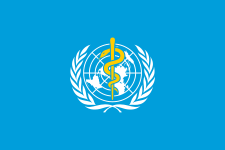 "Till date excess Fluoride was not detected Darbhnga. But I have asked officials to confirm the newpaper reports so that we can take appropriate steps," Choubey said pointing out that 12 districts of the state were afflicted by fluoride which causes fluorosis, a disease nicknamed by medical professionals as "bone crusher". TOI had reported the detection of excess floride by a team of researchers.
"Till date excess Fluoride was not detected Darbhnga. But I have asked officials to confirm the newpaper reports so that we can take appropriate steps," Choubey said pointing out that 12 districts of the state were afflicted by fluoride which causes fluorosis, a disease nicknamed by medical professionals as "bone crusher". TOI had reported the detection of excess floride by a team of researchers.
Choubey conceded that fluoride and arsenic had been emerging as a major health problem in Bihar.
TVNL Comment: And we add this stuff to our water?

 Health Glance
Health Glance The genetic code of two of the most deadly cancers has been cracked by British scientists in a world first that opens up a whole new era in the treatment for the disease.
The genetic code of two of the most deadly cancers has been cracked by British scientists in a world first that opens up a whole new era in the treatment for the disease. High levels of a hormone that controls appetite appear to be linked to a reduced risk of developing Alzheimer's disease, US research suggests.
High levels of a hormone that controls appetite appear to be linked to a reduced risk of developing Alzheimer's disease, US research suggests. Researchers presented new findings Saturday at a breast-cancer symposium here suggesting that the risks associated with anthracyclines, a class of chemotherapy drugs widely used to treat the disease, outweighed their benefits in some patients.
Researchers presented new findings Saturday at a breast-cancer symposium here suggesting that the risks associated with anthracyclines, a class of chemotherapy drugs widely used to treat the disease, outweighed their benefits in some patients. Health insurance industry trade groups opposed to President Obama's health care reform bill are paying Facebook users fake money -- called "virtual currency" -- to send letters to Congress protesting the bill.
Health insurance industry trade groups opposed to President Obama's health care reform bill are paying Facebook users fake money -- called "virtual currency" -- to send letters to Congress protesting the bill. Tobacco use kills at least 5 million people every year, a figure that could rise if countries don't take stronger measures to combat smoking, the World Health Organization said Wednesday.
Tobacco use kills at least 5 million people every year, a figure that could rise if countries don't take stronger measures to combat smoking, the World Health Organization said Wednesday. The Food and Drug Administration said some patients received up to eight times the normal amount of radiation. High doses of radiation can cause cataracts and increase the risk of some forms of cancer.
The Food and Drug Administration said some patients received up to eight times the normal amount of radiation. High doses of radiation can cause cataracts and increase the risk of some forms of cancer.






























